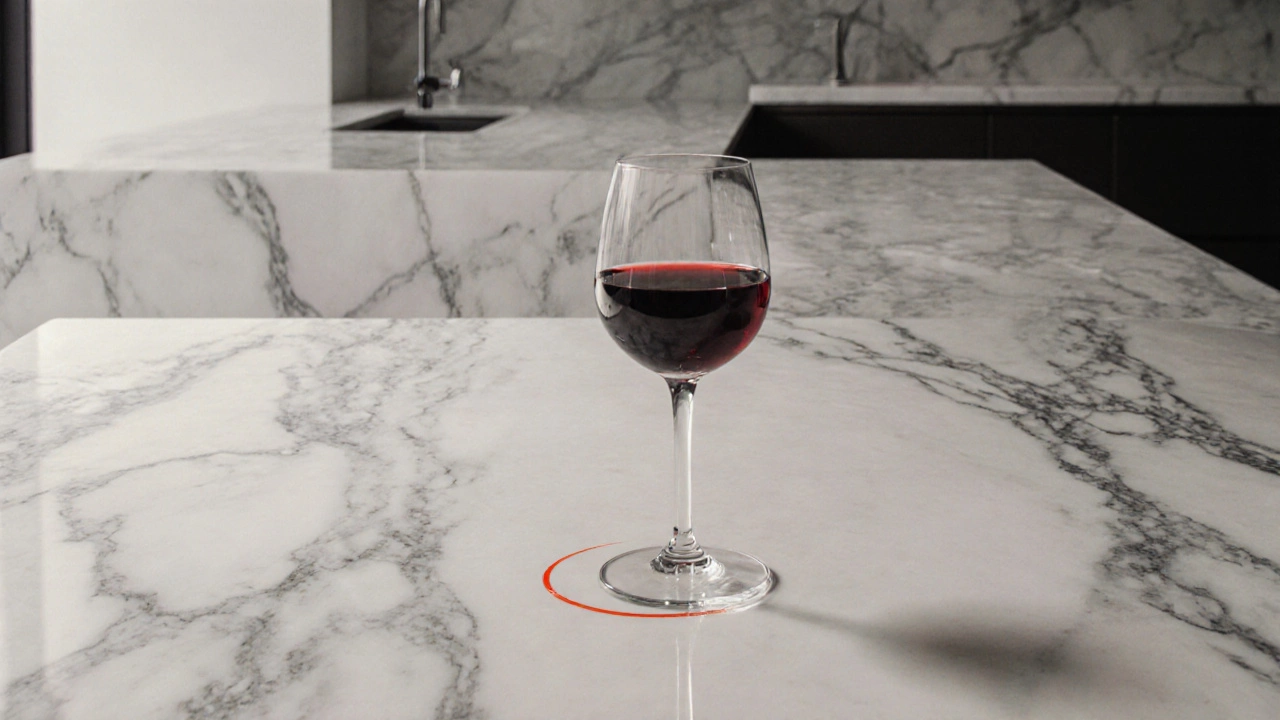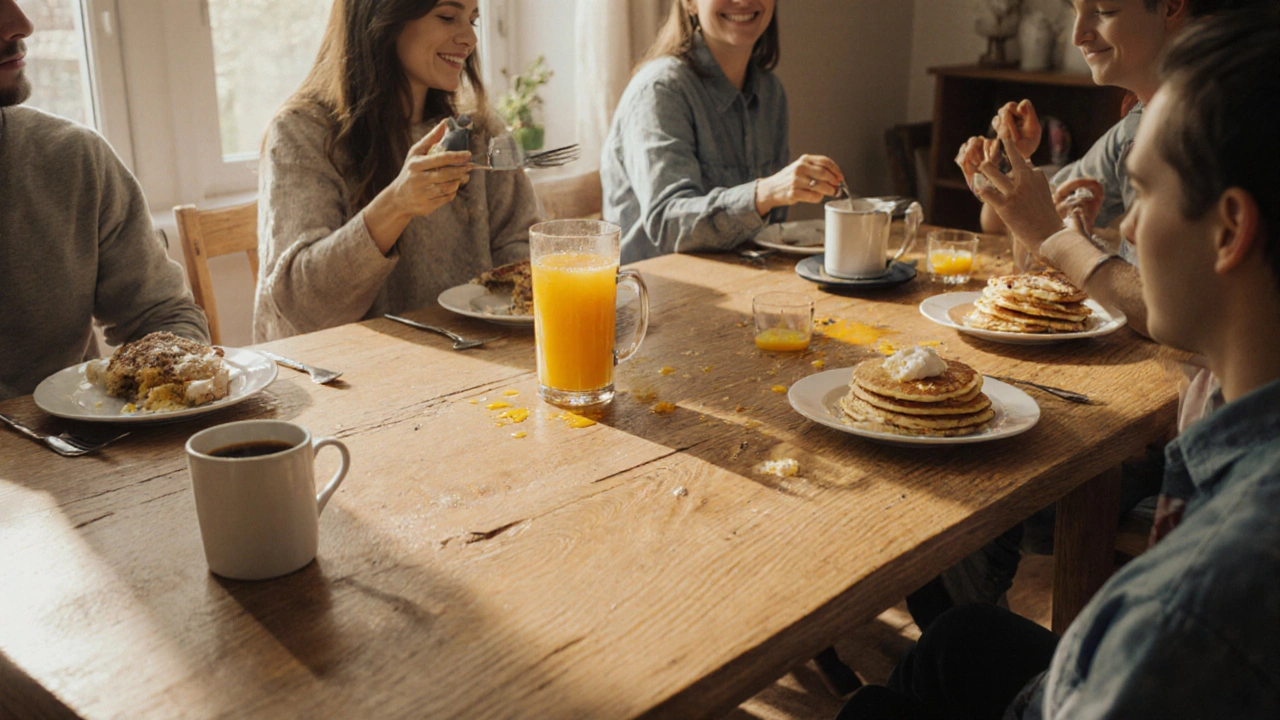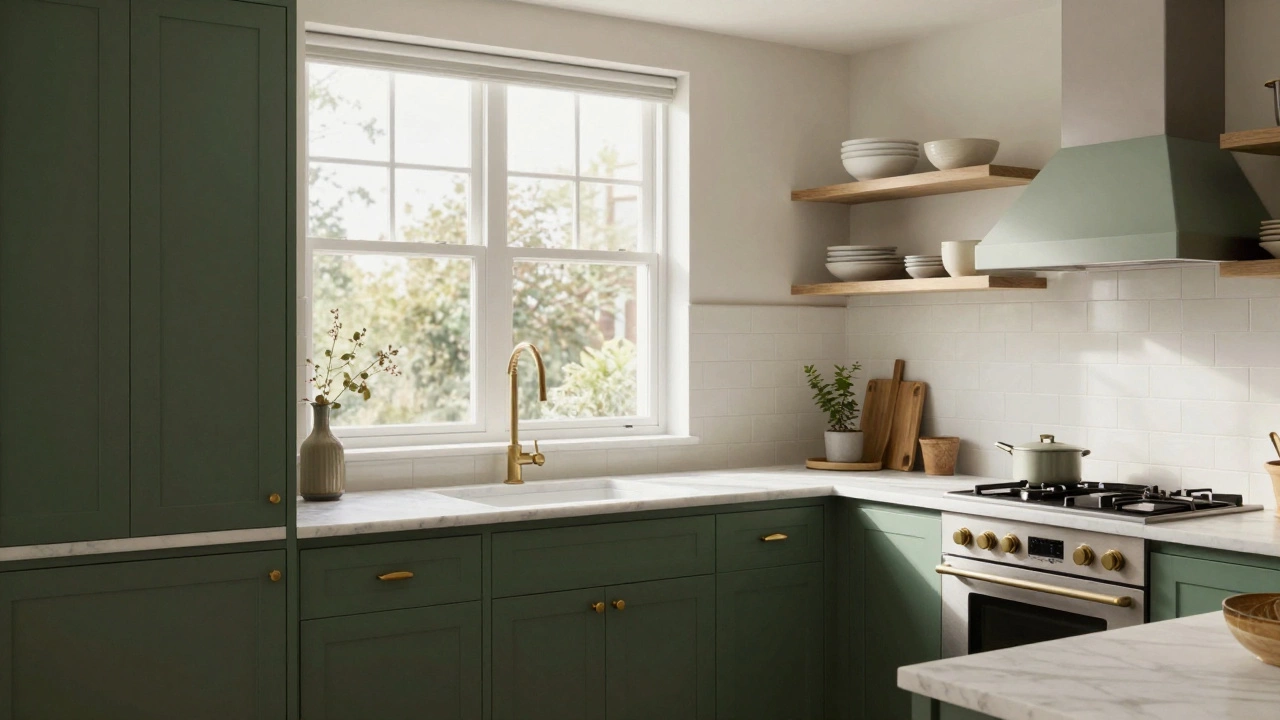Dining Table Material Finder
How often do you use your dining table?
Do you have children or pets?
What's your budget range?
What's most important to you?
What's your climate like?
Recommended Material
Ideal for:
Not ideal for:
Choosing the right material for your dining room table isn’t just about looks-it’s about how you live. You want something that survives sticky fingers, hot pans, weekend brunches, and decades of family dinners. But with so many options out there, how do you pick? Let’s cut through the noise and break down what actually works in real homes-not just showrooms.
Wood: The Classic That Lasts
Wood is still the most popular choice for a reason. It’s warm, durable, and ages beautifully. Hardwoods like oak, walnut, and teak dominate the market because they handle daily wear better than softwoods. Oak, for example, has a dense grain that resists dents and scratches. Walnut offers a richer, darker tone that hides minor marks well. Teak, often used in outdoor furniture, is naturally oily and water-resistant-perfect if you’ve got kids who spill juice constantly.
Solid wood tables can last 50+ years if cared for. But they’re not cheap. A solid oak table starts around $1,200 and can go well over $3,000. If budget’s tight, engineered wood with a real wood veneer is a smart middle ground. It’s stable, less prone to warping than solid wood, and looks nearly identical. Just make sure the veneer is at least 1mm thick-you don’t want it peeling after two years.
Marble: Luxury with a Catch
Marble tables scream elegance. The veining in Carrara or Calacatta marble gives each table a unique, almost artistic look. It’s cool to the touch, which feels great in warmer climates like Melbourne, and it’s incredibly hard-resistant to scratches from plates and cutlery.
But here’s the catch: marble stains. Red wine, tomato sauce, lemon juice-they all leave marks if you don’t wipe them up fast. Even water rings can dull the finish over time. Sealing the surface every 6-12 months helps, but it’s not a set-it-and-forget-it material. If you’re the type who leaves coffee mugs sitting out or doesn’t use coasters, marble might drive you crazy.
Also, marble is heavy. A 6-foot table can weigh over 200 kg. That means you need a solid floor and professional delivery. And if you drop a heavy pot? Cracks can happen. Not a great choice for families with toddlers or clumsy teens.
Glass: Sleek but High-Maintenance
Tempered glass tables look modern and open up small spaces. They’re easy to clean-just a wipe with glass cleaner and you’re done. They pair well with metal or wood bases, giving you flexibility in style.
But glass shows everything. Fingerprints, dust, water spots, crumbs-it all stares back at you. If you hate cleaning, this isn’t your material. Even the best microfiber cloth won’t stop streaks from appearing within hours.
Also, while tempered glass is stronger than regular glass, it can still shatter under impact. A dropped plate or a kid running into the table? That’s not just a mess-it’s a safety risk. Glass tables work best in formal dining rooms or apartments where meals are occasional, not daily.

Engineered Wood: The Smart Budget Pick
Engineered wood isn’t fancy, but it’s practical. It’s made from layers of plywood with a thin top layer of real wood. That structure makes it stable-less likely to warp in humid or dry conditions. It’s also much cheaper than solid wood, with decent options starting at $400.
Brands like IKEA, Ashley, and Wayfair offer engineered wood tables that look expensive but cost half as much. Many come with scratch-resistant finishes and easy-to-clean surfaces. Some even have extendable leaves for guests.
The downside? You can’t refinish it like solid wood. If the top gets deeply scratched or burned, you’re stuck replacing it. But for most families, that’s not a dealbreaker. It’s the most realistic option for everyday life.
Stainless Steel and Metal: Industrial Edge
Stainless steel tables are rare in homes, but they’re gaining ground. They’re waterproof, heatproof, and nearly impossible to scratch. Great for modern lofts or minimalist interiors. Some come with wood or stone tops for warmth, but all-metal designs are bold.
They’re easy to clean-just soap and water. And they don’t need sealing or polishing. But metal conducts temperature. In winter, the surface feels icy. In summer, it gets hot under direct sun. And if you’ve got kids, the edges can be dangerous. Rounded corners help, but it’s still not the coziest material for family meals.
Stone Alternatives: Quartz and Laminate
Quartz is a great alternative to marble. It’s non-porous, so it doesn’t stain. It’s also harder than granite and doesn’t need sealing. Many quartz tables mimic marble veining without the upkeep. Prices are similar to marble, but you get more durability.
Laminate is the budget king. It’s made from layers of paper and resin pressed onto particleboard. It’s tough, comes in hundreds of patterns (including wood and stone looks), and costs under $300. High-pressure laminate (HPL) is the best kind-resistant to heat, moisture, and scratches. You’ll find it in commercial kitchens for a reason.
The catch? Laminate can’t be repaired. If it chips, you’re replacing the whole top. But for a rental, a second home, or a casual dining space, it’s unbeatable.

What’s Best for Your Lifestyle?
There’s no single ‘best’ material. It depends on how you use the table.
- If you host big dinners often and want something that lasts generations → solid wood
- If you love luxury and don’t mind maintenance → marble
- If you have a small space and want a clean look → glass (with rounded edges)
- If you’re on a budget and want low fuss → engineered wood or laminate
- If you want modern, zero-maintenance, and durable → quartz
- If you’re going for industrial or urban style → stainless steel
Also consider your climate. In humid areas like Melbourne, solid wood can expand and contract. Engineered wood handles that better. In dry climates, wood can crack-so humidity control matters.
What to Avoid
Steer clear of cheap particleboard with thin veneers. They swell when they get wet. Avoid plastic-coated tables-they yellow, peel, and look cheap after a year. And don’t buy a table without checking the base. A flimsy metal frame or wobbly legs ruin even the most beautiful top.
Always ask: Can I wipe this clean in 10 seconds? Will it survive a dropped fork? Does it feel solid when I push on it? If the answer to any of those is no, keep looking.
Final Tip: Test Before You Buy
Don’t just look at photos. Sit at the table. Run your hand over the surface. Pour a little water on it and see how it beads up. Place a hot mug on it for 5 minutes. See if it leaves a mark. That’s how you know if it’ll work in your home.
The best dining table isn’t the most expensive one. It’s the one you’ll still love using in five years-without stressing over every scratch or spill.
Is wood or marble better for a dining table?
Wood is better for everyday use-it’s forgiving, repairable, and warms up a room. Marble looks stunning but stains easily and needs constant care. Choose wood if you eat at the table daily. Choose marble only if you’re okay with frequent sealing and gentle handling.
What’s the most durable dining table material?
Quartz and stainless steel are the most durable. Quartz resists stains, scratches, and heat without sealing. Stainless steel won’t warp, crack, or stain. Solid wood is close behind if maintained properly. Glass and marble are less durable under daily stress.
Can I use a glass dining table with kids?
Tempered glass is safer than regular glass, but it’s still not ideal with young kids. A fall, a thrown toy, or even a heavy plate dropped from a chair can cause it to shatter. If you choose glass, make sure it has rounded edges and a sturdy base. For families with small children, wood or quartz are much safer bets.
How do I clean a marble dining table?
Wipe spills immediately with a soft, damp cloth. Use a pH-neutral stone cleaner-never vinegar, bleach, or ammonia. Dry the surface after cleaning. Seal the table every 6-12 months with a stone sealer designed for marble. Avoid placing hot items directly on the surface.
Are engineered wood tables worth it?
Yes, if you want the look of real wood without the high cost or warping risk. Engineered wood is stable in changing humidity, which is perfect for Melbourne’s climate. Just avoid the cheapest options with thin veneers. Look for at least 1mm of real wood on top and a solid core.
What’s the cheapest durable dining table option?
High-pressure laminate (HPL) is the cheapest durable option. It costs under $300, resists scratches and heat, and comes in wood or stone finishes. It’s used in restaurants and schools because it lasts. Just know it can’t be repaired-if it chips, you replace the whole top.
If you’re shopping now, focus on materials that match your daily life-not just your Pinterest board. A table that survives real meals, real chaos, and real time is the one you’ll be happy with for years.






